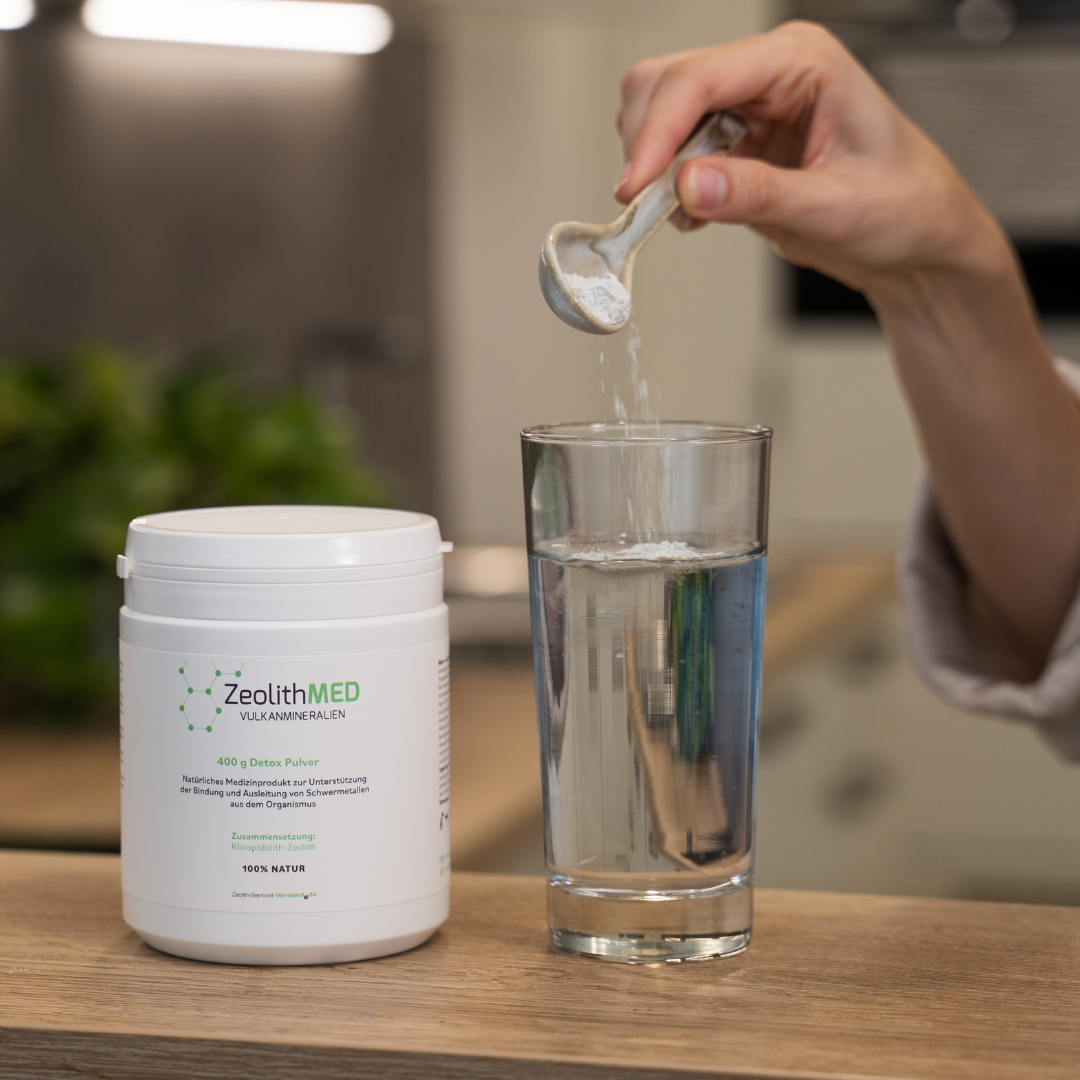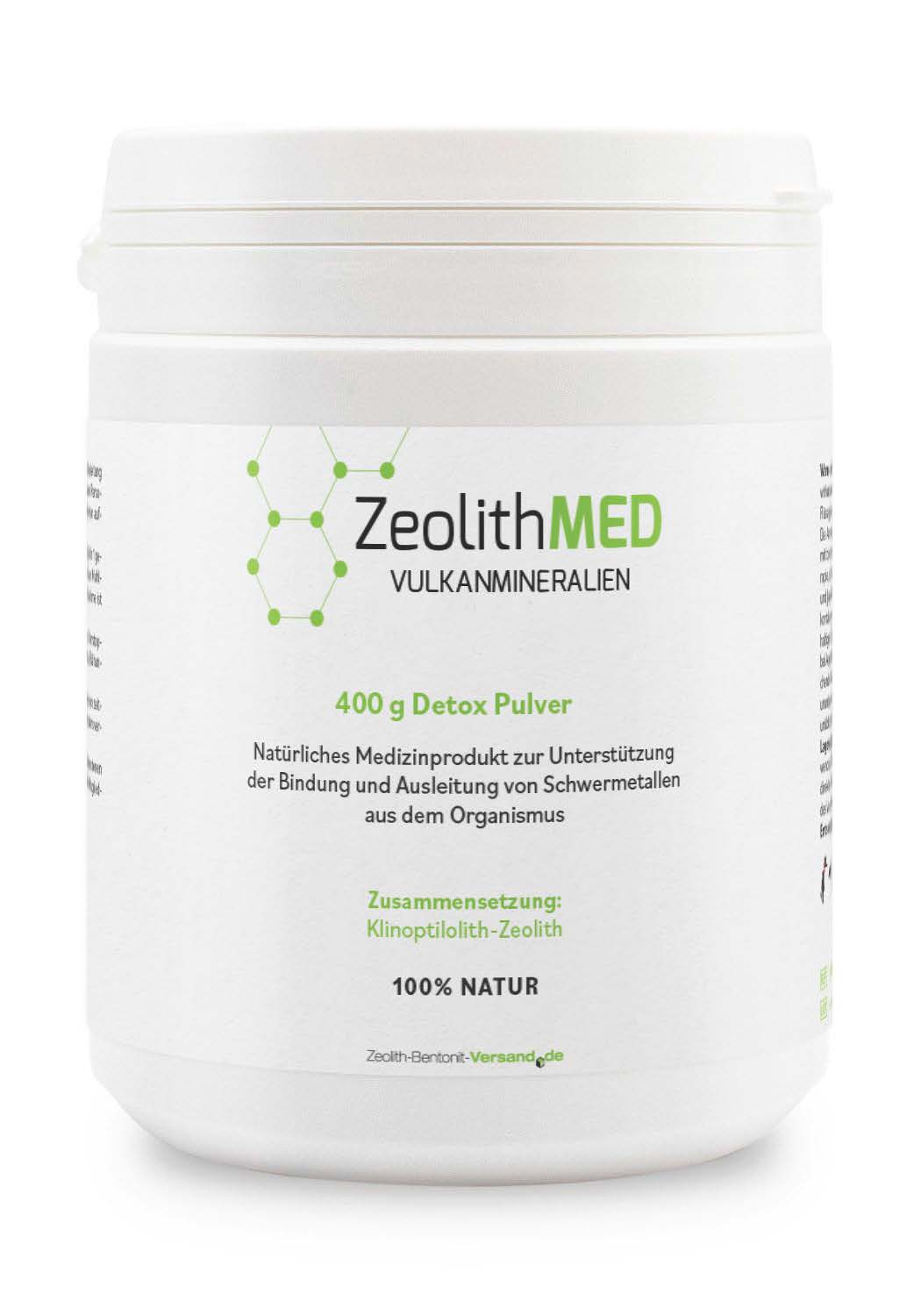
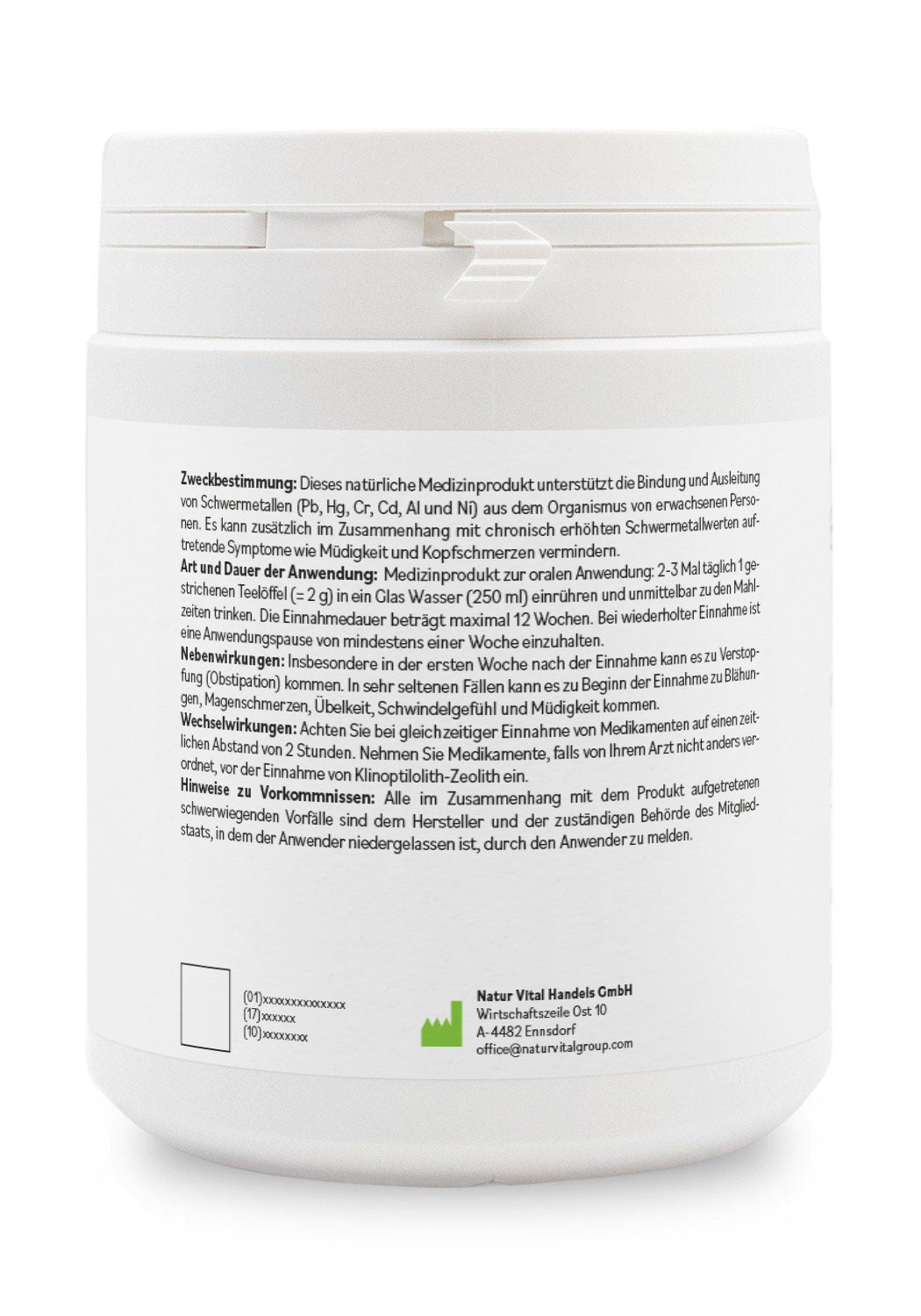
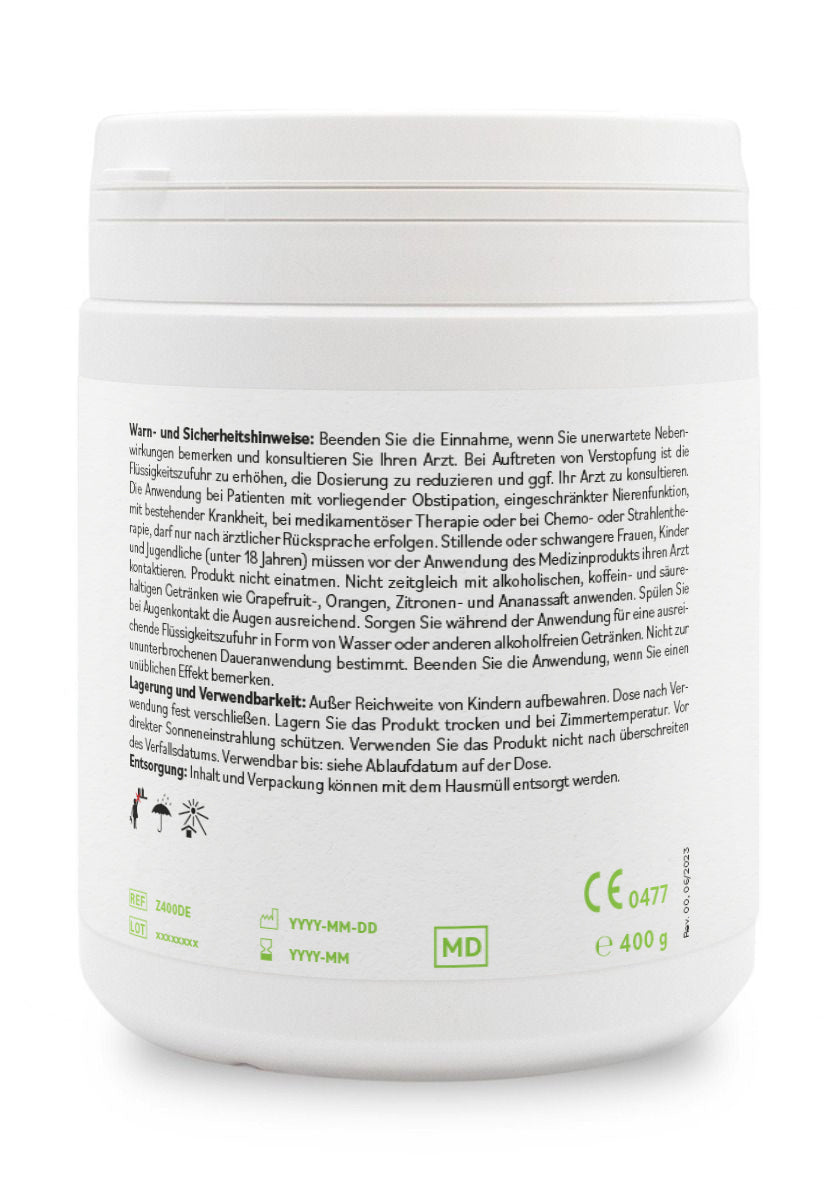
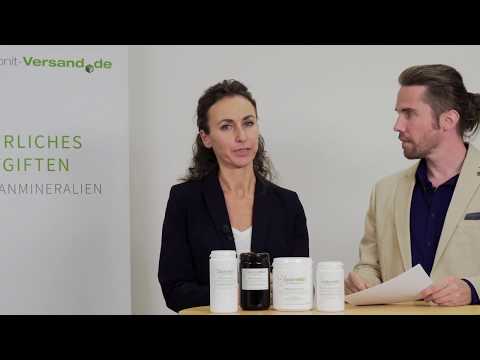
Product information ZeolithMED detox powder 400g
ZeolithMED- natural medical device for ingestion to relieve the body by binding and eliminating heavy metals (lead, mercury, chromium, cadmium, aluminium and nickel)
ZeolithMED - the classic detoxification specialist
ZeolithMED is a natural, independently tested product with CE certification made from clinoptilolite zeolite, which is indigestible and insoluble in water, has a high selective adsorption capacity and molecular sieving functions against various pollutants and is therefore suitable for detoxification.
Why detoxify?
Unfortunately, our modern diet not only supplies the body with valuable substances such as vitamins and minerals, but also takes in substances that can be harmful to our health in certain quantities. Such substances include environmental contaminants, such as heavy metals like lead, mercury, chromium, cadmium, nickel and aluminium, which can enter our food via contamination of the air, water and soil. These substances have the unpleasant property of accumulating in the food chain.
Natural detoxification - to protect your health
The indigestible ZeolithMED can selectively bind certain harmful substances in the gastrointestinal tract like a sponge and remove them from the body naturally. The pollutants bound to ZeolithMED in the gastrointestinal tract are thus excreted naturally via the intestines without burdening the metabolism. This means that fewer toxins enter the body. By binding harmful substances, ZeolithMED can relieve the body and alleviate symptoms such as headaches and tiredness caused by an increased heavy metal load.
Substance and ingredients
400g micronised, activated clinoptilolite zeolite, with CE certificate, average grain size approx. 35 micrometres, nanoparticle-free, without additives and admixtures
Application and dosage
Simply stir the powder into a glass of water (250 ml) and drink with a meal. Use 1 level teaspoon of ZeolithMED detox powder 2-3 times a day. Further details can be found in the ZeolithMED instructions for use.
For example, one 400g tin of ZeolithMED Detox Powder is sufficient for approx. 66 days if one level teaspoon (= 2 g) of powder is used 3 times a day.
>> PDF Instructions for use ZeolithMED
| Article number | Z400DE |
| Packaging | Powder jar |
| Pharmaceutical central number | 19160918 |
| Distribution | Zeolith-Bentonit-Versand.de |
| Product code | 09120127210272 |
| Content | 400g |
ZeolithMED detox powder 400g, medical device with CE certificate
100% natural clinoptiolite zeolite powder for 2 months
ab 2 zu je 24,41€ und Sie sparen 2%
ab 4 zu je 23,66€ und Sie sparen 5%
ab 6 zu je 22,91€ und Sie sparen 8%

